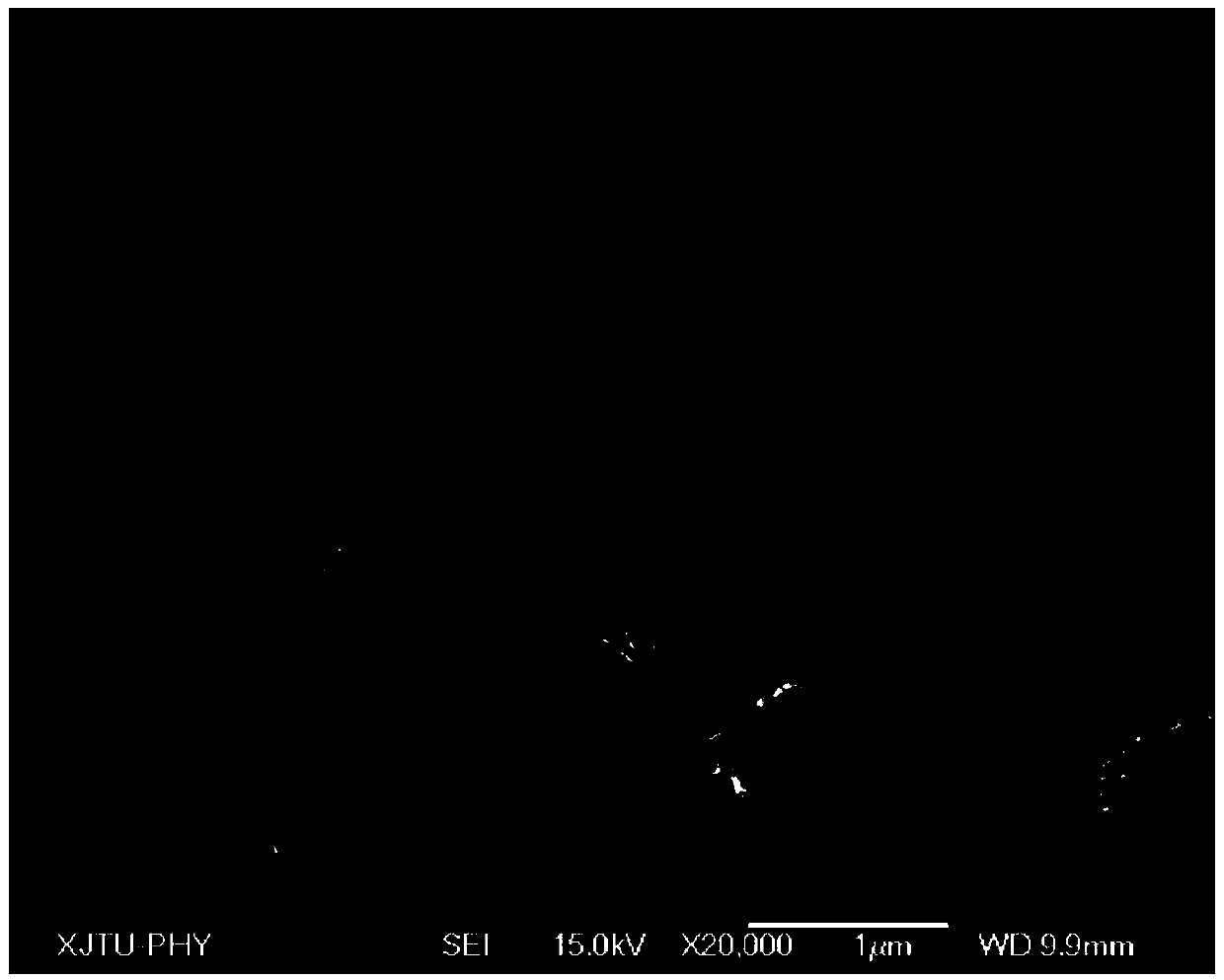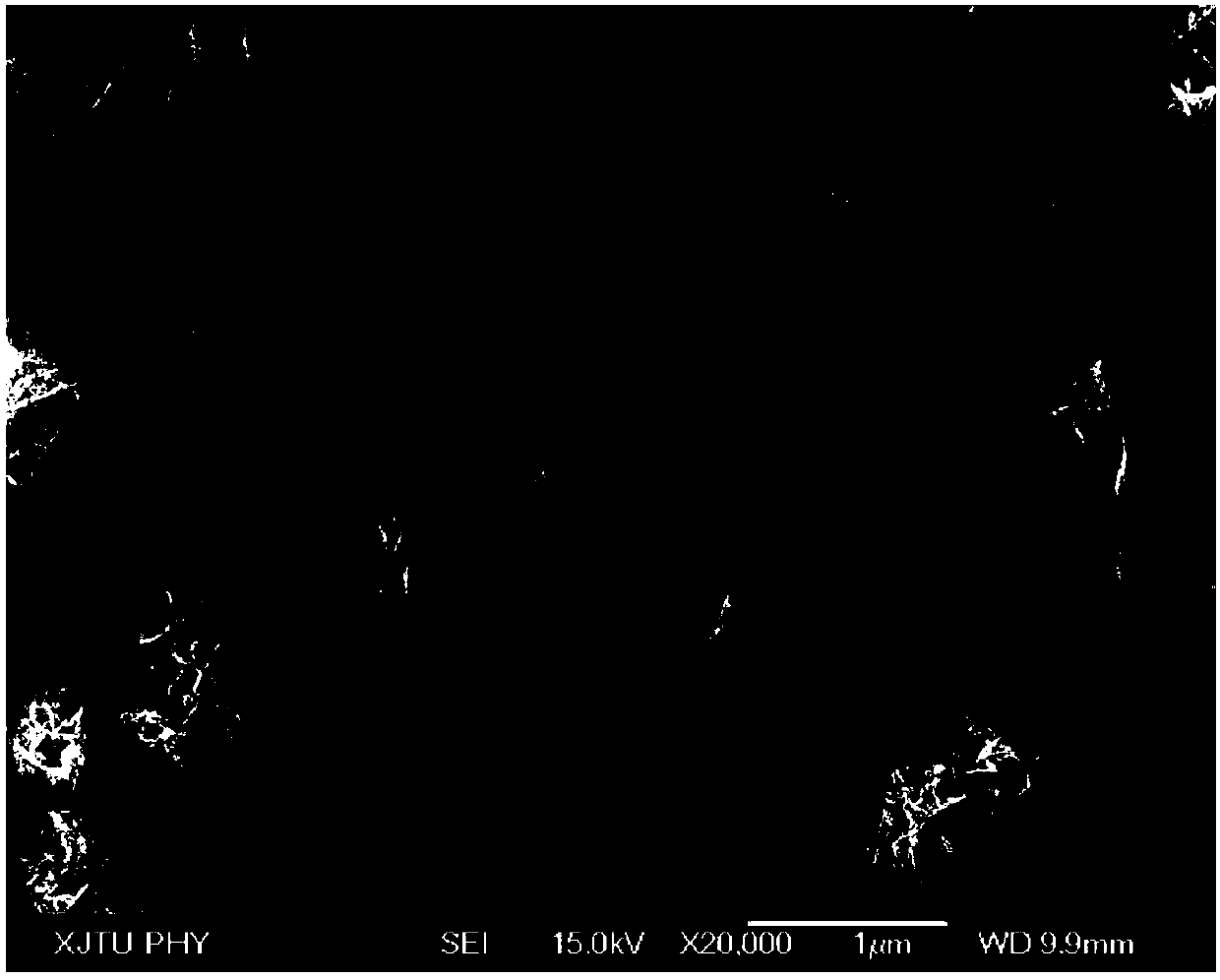Method for preparing carbon-doped bismuth oxychloride nanoflower powder
A technology of bismuth oxychloride and nanoflowers, applied in chemical instruments and methods, physical/chemical process catalysts, chemical/physical processes, etc., can solve the problems of complex preparation process, low photocatalytic efficiency, and high preparation cost, and achieve product efficiency High, increased specific surface area, simple operation
- Summary
- Abstract
- Description
- Claims
- Application Information
AI Technical Summary
Problems solved by technology
Method used
Image
Examples
Embodiment 1
[0025] Step 1, preparation of carbon-doped bismuth oxychloride nanoflower powder
[0026] Bismuth nitrate pentahydrate and nickel chloride were weighed according to the molar ratio of Bi:Cl of 1:1, each placed in glycerol, ultrasonic 20min to completely dissolve the solute in the solvent and disperse evenly, bismuth nitrate pentahydrate and glycerine The mass volume ratio of alcohol is 0.02g / ml, and the mass volume ratio of nickel chloride and glycerol is 0.004g / ml. Mix the dispersed bismuth nitrate pentahydrate solution and nickel chloride solution in a clean polytetrafluoroethylene lining, add a magnetic stirring rotor and stir with strong magnetic force for 30 minutes to disperse the mixed solution evenly, and then take out the rotor. The resulting mixture was transferred into a matching stainless steel reaction kettle, and then placed in an oven with water heating at 160°C for 12 hours. After air-cooling in the furnace, the obtained solid-liquid mixture was taken out, and...
Embodiment 2
[0032] Bismuth nitrate pentahydrate and nickel chloride were respectively weighed according to the molar ratio of Bi:Cl of 1:2, each placed in glycerol, ultrasonic 25min to completely dissolve the solute in the solvent and disperse evenly, bismuth nitrate pentahydrate and propane The mass volume ratio of triol is 0.04g / ml, and the mass volume ratio of nickel chloride and glycerol is 0.006g / ml. Mix the dispersed bismuth nitrate pentahydrate solution and nickel chloride solution in a clean polytetrafluoroethylene lining, add a magnetic stirring rotor and stir with strong magnetic force for 35 minutes to disperse the mixed solution evenly, and then take out the rotor. The resulting mixture was transferred into a matching stainless steel reaction kettle, and then placed in an oven with water heating at 150°C for 14 hours. After air-cooling in the furnace, the obtained solid-liquid mixture was taken out, and washed four times by centrifugation with deionized water and absolute etha...
Embodiment 3
[0038]Bismuth nitrate pentahydrate and nickel chloride were respectively weighed according to the molar ratio of Bi:Cl of 1:3, each placed in glycerol, and the solute was completely dissolved in the solvent and dispersed evenly by ultrasonication for 30 minutes. The mass volume ratio of triol is 0.03g / ml, and the mass volume ratio of nickel chloride and glycerol is 0.005g / ml. Mix the dispersed bismuth nitrate pentahydrate solution and nickel chloride solution and place them in a clean polytetrafluoroethylene lining, add a magnetic stirring rotor and stir with strong magnetic force for 40 minutes to disperse the mixed solution evenly, and then take out the rotor. The resulting mixed solution was transferred into a matching stainless steel reaction kettle, and then placed in an oven with water heating at 170°C for 10 hours. After air-cooling in the furnace, the obtained solid-liquid mixture was taken out, and washed by centrifugation with deionized water and absolute ethanol for...
PUM
 Login to View More
Login to View More Abstract
Description
Claims
Application Information
 Login to View More
Login to View More - R&D
- Intellectual Property
- Life Sciences
- Materials
- Tech Scout
- Unparalleled Data Quality
- Higher Quality Content
- 60% Fewer Hallucinations
Browse by: Latest US Patents, China's latest patents, Technical Efficacy Thesaurus, Application Domain, Technology Topic, Popular Technical Reports.
© 2025 PatSnap. All rights reserved.Legal|Privacy policy|Modern Slavery Act Transparency Statement|Sitemap|About US| Contact US: help@patsnap.com


